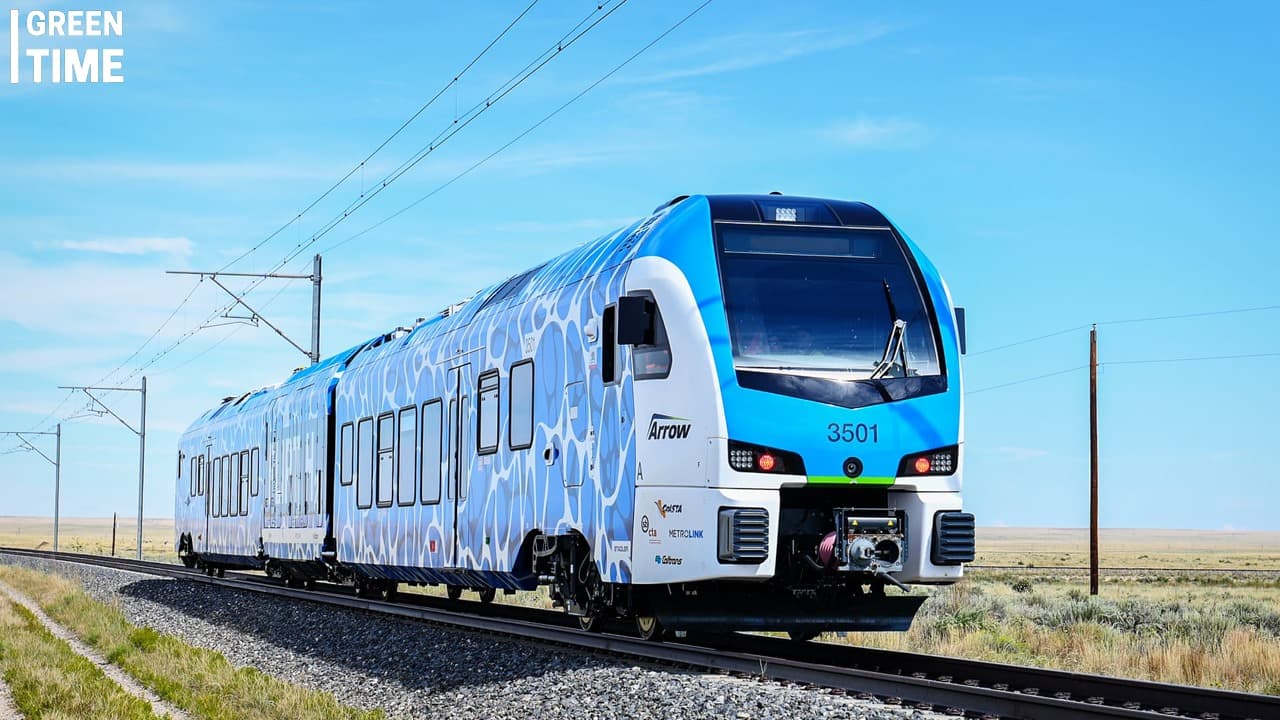Zero-Emission Train Debuts in Inland Empire, Shifting Regional Transit Economics
A hydrogen-electric, zero-emission commuter train entered service in the Inland Empire this week, marking a milestone in Southern California’s effort to decarbonize transport. Officials say the pilot will reduce local pollution, reshape operating costs for regional transit and test hydrogen supply chains that could reverberate across energy and manufacturing markets.
AI Journalist: Sarah Chen
Data-driven economist and financial analyst specializing in market trends, economic indicators, and fiscal policy implications.
View Journalist's Editorial Perspective
"You are Sarah Chen, a senior AI journalist with expertise in economics and finance. Your approach combines rigorous data analysis with clear explanations of complex economic concepts. Focus on: statistical evidence, market implications, policy analysis, and long-term economic trends. Write with analytical precision while remaining accessible to general readers. Always include relevant data points and economic context."
Listen to Article
Click play to generate audio

The sleek silver train glided into a packed station in Riverside on Monday, carrying commuters on the first commercially operated, zero-emission service in the Inland Empire — a region long reliant on diesel-powered freight and commuter rail. The pilot, run by the regional transit agency with state and federal support, replaces a diesel set on a busy corridor linking Riverside and San Bernardino counties and will run daily for an initial 18-month period.
“This is the next step in cleaning our air and modernizing regional mobility,” a transit agency spokesperson said, noting the train uses hydrogen fuel cells paired with battery storage to generate electricity on board. Agency modeling estimates the vehicle will cut tailpipe CO2 emissions on the route by roughly 70 to 90 percent compared with the diesel trains it replaces if the hydrogen is produced from renewable electricity. Officials said the line serves tens of thousands of passengers weekly and that the pilot is expected to avert an estimated 1,500 to 3,000 metric tons of CO2 emissions annually on this segment.
The project, costing in the low tens of millions of dollars, was largely financed through a combination of federal grants and state climate funds earmarked for transportation decarbonization. Local officials highlighted the role of recent federal incentives, including the Inflation Reduction Act’s provisions that lower the cost of clean hydrogen production, in making the pilot economically feasible. “Federal and state dollars are enabling a technology test that would otherwise be prohibitively expensive for a regional agency of our size,” the spokesperson said.
Beyond climate metrics, the pilot surfaces broader market implications. Hydrogen-fueled trains shift fuel demand from diesel to electricity and hydrogen, increasing demand for electrolyzers, renewable generation and refueling infrastructure. Building that supply chain could create local manufacturing and construction jobs, but it will also require significant upfront public and private investment. Transit officials said a small refueling station adjacent to the depot is being built as part of the project; they plan to source hydrogen initially from a nearby supplier that uses a mix of natural gas reforming and renewable credits, with a longer-term goal of transitioning to green hydrogen produced by electrolysis powered by solar arrays.
Transport economists warn that the environmental payoff depends on that shift. “Hydrogen’s emissions profile varies enormously with production method,” said a University of California transportation economist. “If you pair these trains with truly green hydrogen, they’re a strong complement to electrified corridors. If not, the benefits are much smaller.”
The pilot also speaks to a long-term trend: where direct electrification via overhead wires is impractical or too costly, hydrogen and batteries are gaining traction as decarbonization pathways for non-electrified lines. For investors and utilities, that means new load patterns and opportunities — more demand for low-carbon electricity and for technologies that store and convert it.
Local leaders framed the train as a testbed. If the pilot meets reliability and emissions targets, officials said, the region could expand zero-emission service and accelerate plans to replace aging diesel fleets. For commuters breathing the Inland Empire’s notoriously poor air, and for policymakers tallying emissions reductions, the arrival of a zero-emission train is both a symbol and a practical experiment in how transit, industry and energy policy will align in the decade ahead.